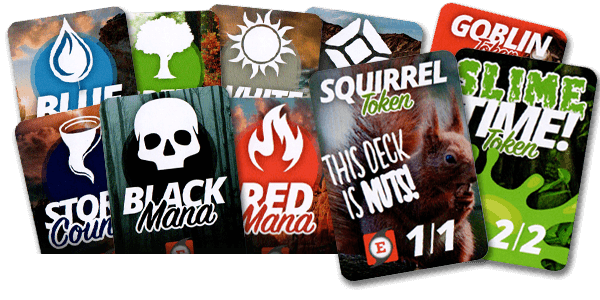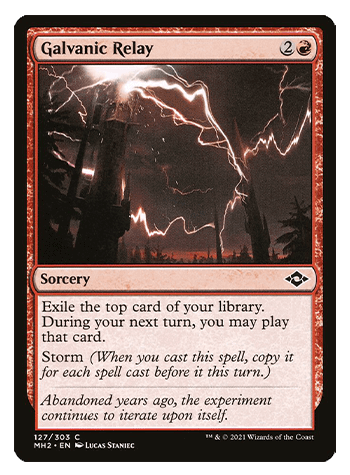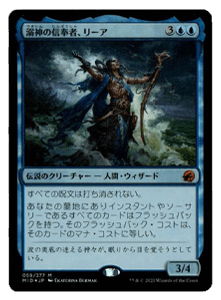Hello everyone and welcome back to Reading the Ropes!
In this article, we are going to cover the basics of how to mulligan with The Epic Storm. Knowing how to mulligan is an incredibly intricate concept that can’t easily be covered in one article, but my goal is to provide you the tools to evaluate hands in various general contexts, from which you can extrapolate a lot of meaningful knowledge. For those who want to learn more about mulligans, especially in specific match-ups, head over to the Matchup Mulligan series archive, where Bryant Cook has done great work. This article is meant to serve as more of an introduction, and while some concepts are specific to The Epic Storm, you may also find this knowledge useful for any deck in any format.
The knowledge surrounding mulligans is broken up into two parts. The first involves games where you don’t know what your opponent is playing, which typically means game one. In these games, we aren’t looking for anything specific and are rather just trying to find a good hand that is capable of winning at some point in the near future. Once we know what our opponent is playing, and once we’ve sideboarded, things become a bit different as we might be looking for specific cards to counteract our opponent’s game plan, or we might have a stricter standard for how quickly our hand must win the game.
Let’s start by looking at game one. From the previous article, I hope that you got a solid understanding of when a hand is capable of winning a game. This skill will improve over time as you practice it, but you should at least have a general understanding of how much mana is necessary, and what specific cards you need to actually win the game. In game one, we are looking for a hand that either has the capability of winning a game or is very close to it. Preferably, we’d also have a card like Duress to protect our combo. That said, protection is not necessary if your hand wins very quickly or has enough cards like Brainstorm or Ponder to find protection later.
In general, Brainstorm and Ponder significantly increase the range of hands you can keep, as any hand with mana sources, a Brainstorm or a Ponder, and a little bit of action can often come together fairly quickly. Ponder is at its best when you are looking for a specific effect such as a Tutor to bring your hand together, as it is capable of seeing four total cards in order to find it. Brainstorm is best when your hand in general needs improvement, as you can get rid of the mediocre cards and hopefully find better cards to replace them with. As a general rule of thumb, bad hands that do not the requisite number of cantrips to help sculpt them should be mulliganed. Especially with the advent of the new mulligan rule that allows you to Scry 1 after taking any mulligans, you’re just much more likely to win by taking a mulligan than trying to draw many specific effects with no way to find them.
I do not recommend keeping hands without lands that are not capable of winning the game on their own. There are a few exceptions, as I have definitely kept hands that had a Lotus Petal and a Ponder and were otherwise great, but the issue with keeping hands that have no lands is that if you draw a Brainstorm or a Ponder, you won’t be able to profitably cast it to find the cards you need, as doing so will cut you off of your initial mana source. You can keep these hands if they need just a single mana producing card if that includes Rite of Flame, Dark Ritual, and Lion’s Eye Diamond, as your deck is full of those effects, but if it needs something more specific like a land or a tutor effect, you’re likely better off taking a mulligan.
One type of hand that can be difficult to evaluate is a hand that has just lands and mana-producing spells, particularly if one of them is a Lion’s Eye Diamond. These hands can be tempting, as you can cast any draw spells and discard spells that you find, and one tutor will automatically win you the game. My personal recommendation is to mulligan these hands on seven, and not on six or five. The reasoning is that these hands are, on average, going to fairly slow and susceptible to interaction from the opponent, which is often a losing combination. The cost of going from seven to six is low, as the scry you get on six is worth a fraction of a card, meaning that the first mulligan only costs you a fraction of a card as opposed to the remaining mulligans which each cost you a full card.
After sideboarding, the type of hands you are willing to keep will typically get a little bit tighter and can often be categorized depending on the exact matchup.
Against decks that are trying to either beat you very quickly (Belcher, Elves, Storm) or are trying to lock you out of the game immediately (Eldrazi, Blood Moon/Chalice of the Void decks), your hand needs to either win the game on the first or second turn, or needs to have the correct piece(s) of interaction for the matchup, whether that be Abrupt Decay, Duress, or something else. If your hand is a little bit slower and lacks disruption, you are very likely to die without doing anything meaningful.
Against decks that play a longer game and try to interact with you with cards like Force of Will (Grixis Delver, Czech Pile, Miracles), you are looking for a hand that has a meaningful amount of play to it. When I say “play”, I mean a hand with a decent number of mana sources that has some protection spells like Duress as well as a decent amount of the combo or a few cantrips to bring the combo together. That said, you definitely won’t turn down a hand that wins on the first turn without protection, and in those cases you should just go for it, as the odds that they have Force of Will, plus a blue card, plus an otherwise keep-able hand means that you are 60% or better to win the game, which is a great place to be in most Force of Will matchups. Also keep in mind whether or not you are playing a matchup where specific interaction is necessary. For example, if you are playing against a Miracles list and you believe it is common for them for have four Counterbalance in their deck, you may not want to keep the slower hand that can’t reliably find an Abrupt Decay.
Other than the information I’ve provided here, I highly recommend practicing, taking careful stock of the various hands that you’ve seen, and discussing mulligans with players who you believe have a solid grasp of the deck. Practicing your mulligans requires a bit of an academic balance though. It is important to not let individual results with certain hands sway your judgment, as a hand that is only 10% to win a game will still win some games. If you keep a really close hand, simply looking at whether you won the game or not will bias you, and instead you should take into account how the game felt, how lucky or unlucky you might have gotten, and what others think about the hand. Over a much larger sample size, you can really start to get a better understanding of specific hand-types though.
One of the best ways to practice mulligans for game one is to just goldfish the deck. If you’re new to that term, to goldfish a deck means to play without an opponent. Draw a hand and if its close, keep it and see what happens with each draw step. Categorize the hand (“Lotus Petal and Ponder“, “Needs a Tutor to Win”, etc) and take note of how often the hand won the game by turn three or four, and whether or not you were able to do so with protection. This website also has a great resource for practicing mulligans: The Hand Generator. Filling out the form is nice, but you can also just use it to get a feel for what different hands look like.
Beyond that, I’m always happy to discuss hands that you might be unsure about, which you can send to me through my email ([email protected]) or on Facebook if you add me as a friend. This was a bit of a shorter article, as the more intricate parts of mulligans require a much longer article, but it should have given you a solid base from which you can make more complex mulligan decisions. If you want more advanced discussion, I do highly recommending reading Bryant’s Matchup Mulligan series that I linked above, as it discusses more complex and specific concepts that were not covered here.
Until Next Time
That’s all I have for this article! Now that I’m back in school, I should be able to put out these articles at an accelerated pace. If you have any questions, comments, concerns, or recommendations, don’t hesitate to reach out!
Thank you for taking time to read the fourth installment of Reading the Ropes, and I hope that you learned something interesting!











